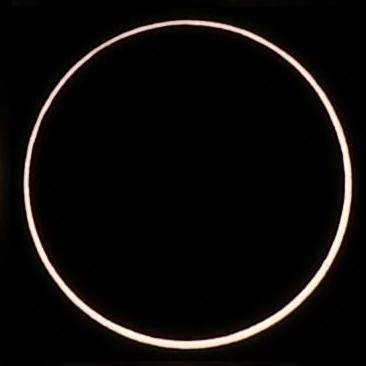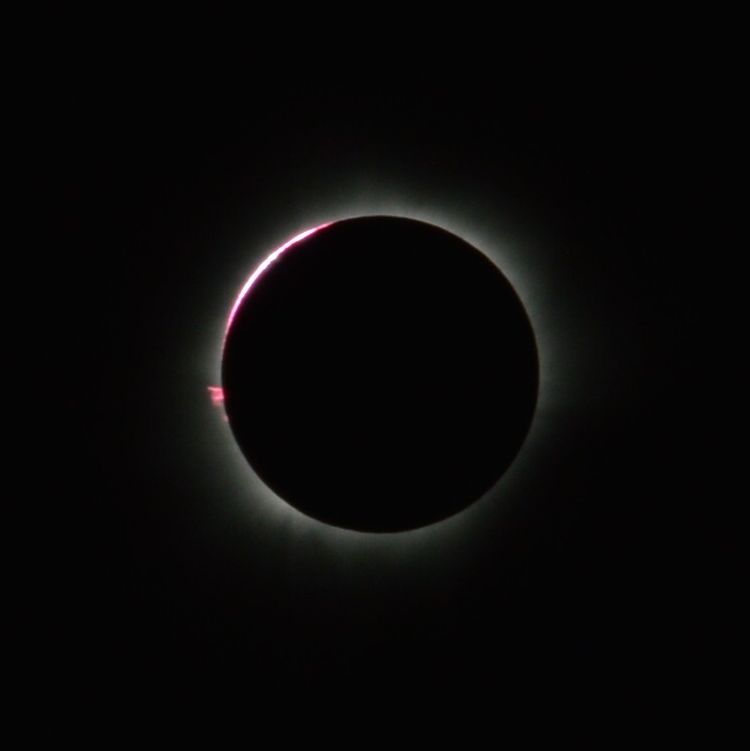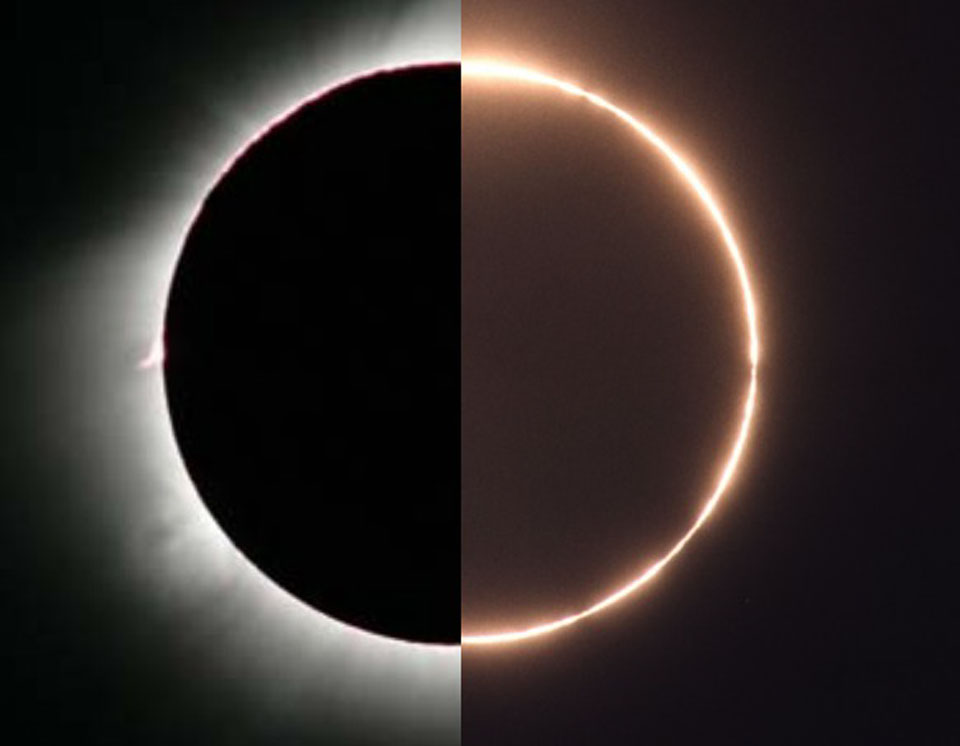Solar Eclipse
A solar eclipse can only occur during a new moon when the Moon casts a shadow as it passes between the Earth and the Sun. While eclipses happen often, they can happen in remote locations of the globe or over oceans, which make them hard to observe.
There are four separate types of solar eclipses:
An annular eclipse occurs when the Sun and Moon line up with the Earth, but the size of the Moon appears smaller to the sun. This causes a bright ring or annulus, called the ‘ring of fire,’ to appear around the moon.

Source: Ezagren/Wikimedia Commons
A partial eclipse occurs when the Moon, the Sun, and Earth don't align in a completely straight line, and the Moon casts only the outer part of its shadow, the penumbra, on Earth. There can be varying magnitudes of partial eclipses.

Source: Tomruen/Wikimedia Commons
A total solar eclipse happens about every 18 months, and the umbra is small so that the path of totality happens along a very small path of the Earth’s surface. During a total eclipse, the Sun is obscured so that only a faint solar corona can be seen. Baily’s Beads are the effect of the Sun’s light passing through craters, mountains, and valleys on the Moon’s surface.

Source: Scoolase/Wikimedia Commons
In a hybrid eclipse, the appearance shifts between an annular and total eclipse depending on the location of the observer and the position of the penumbra and umbra. This type of eclipse is very rare.

Source: NASA